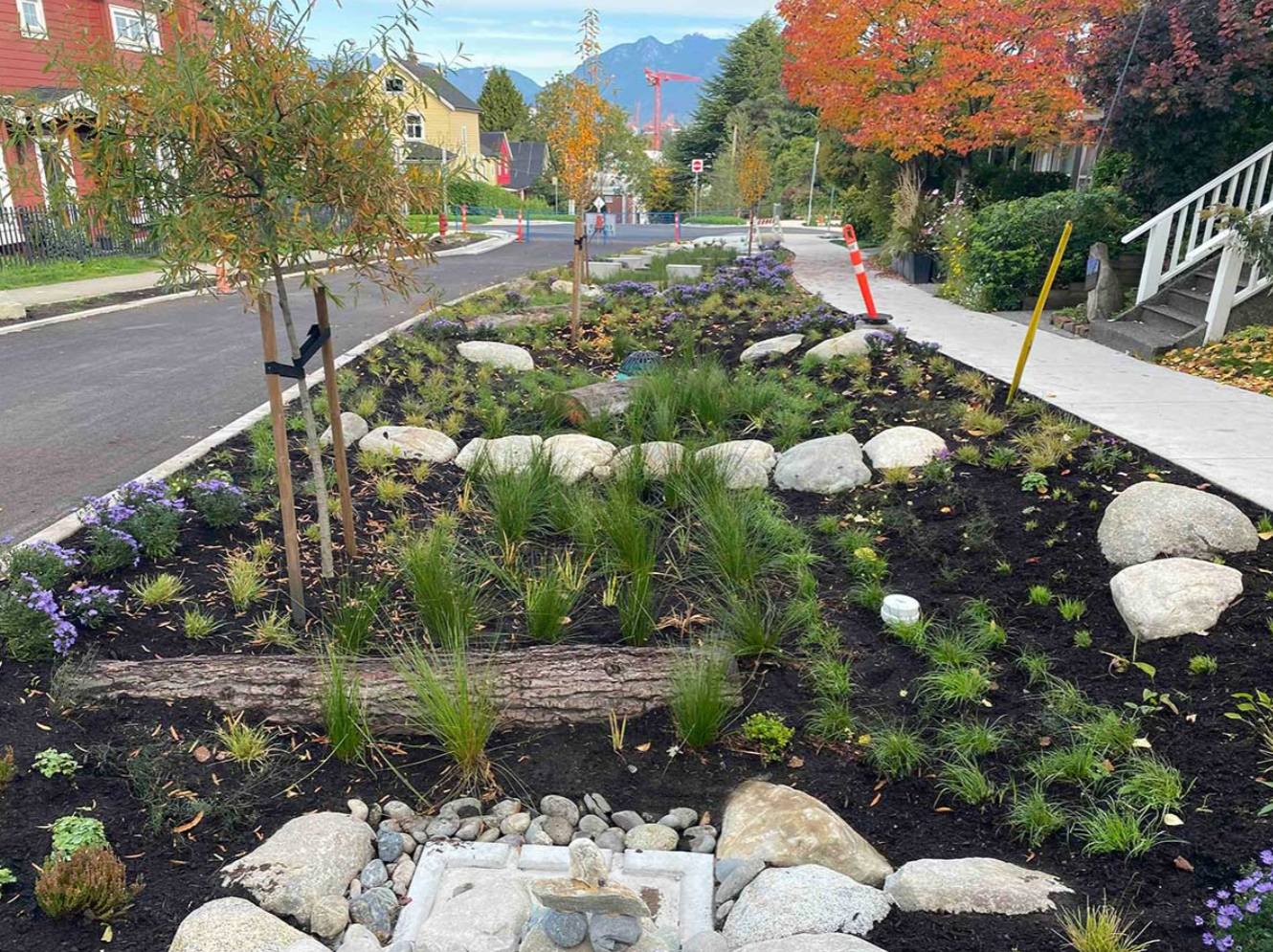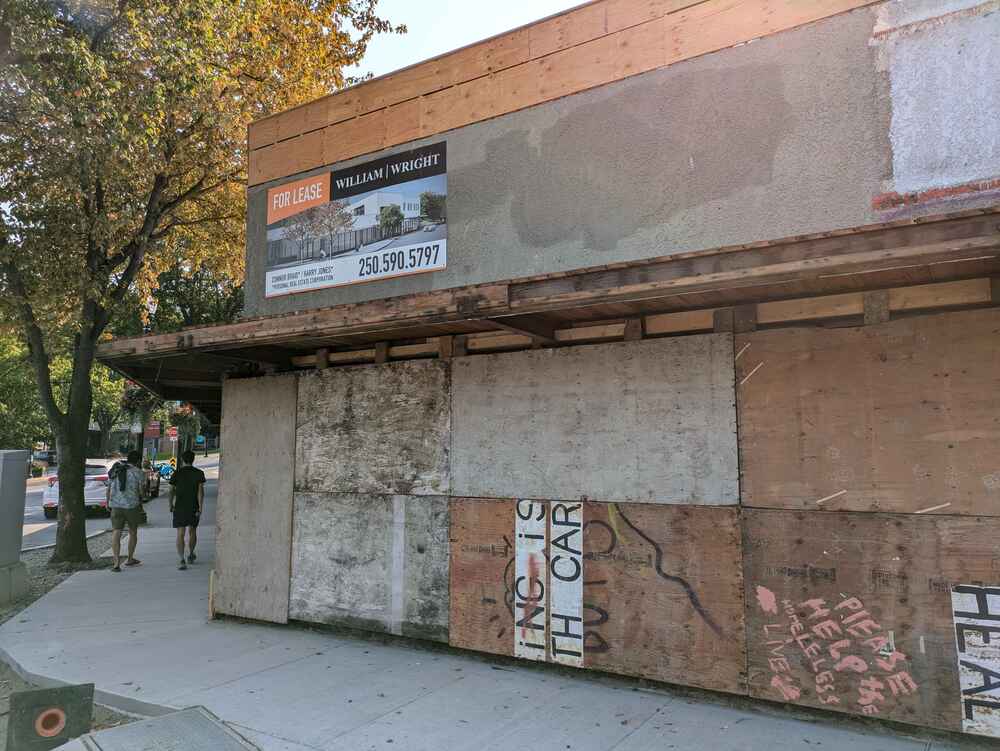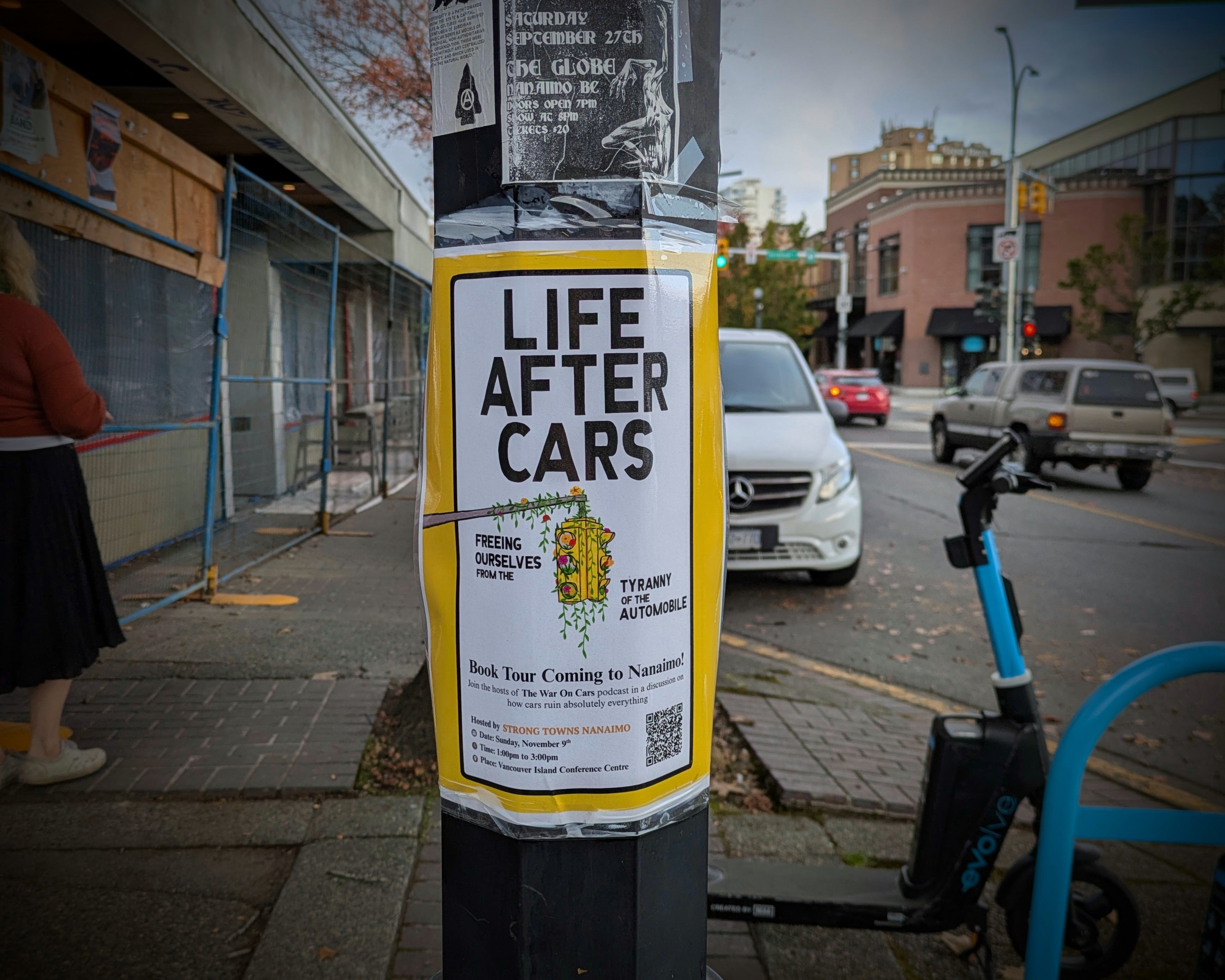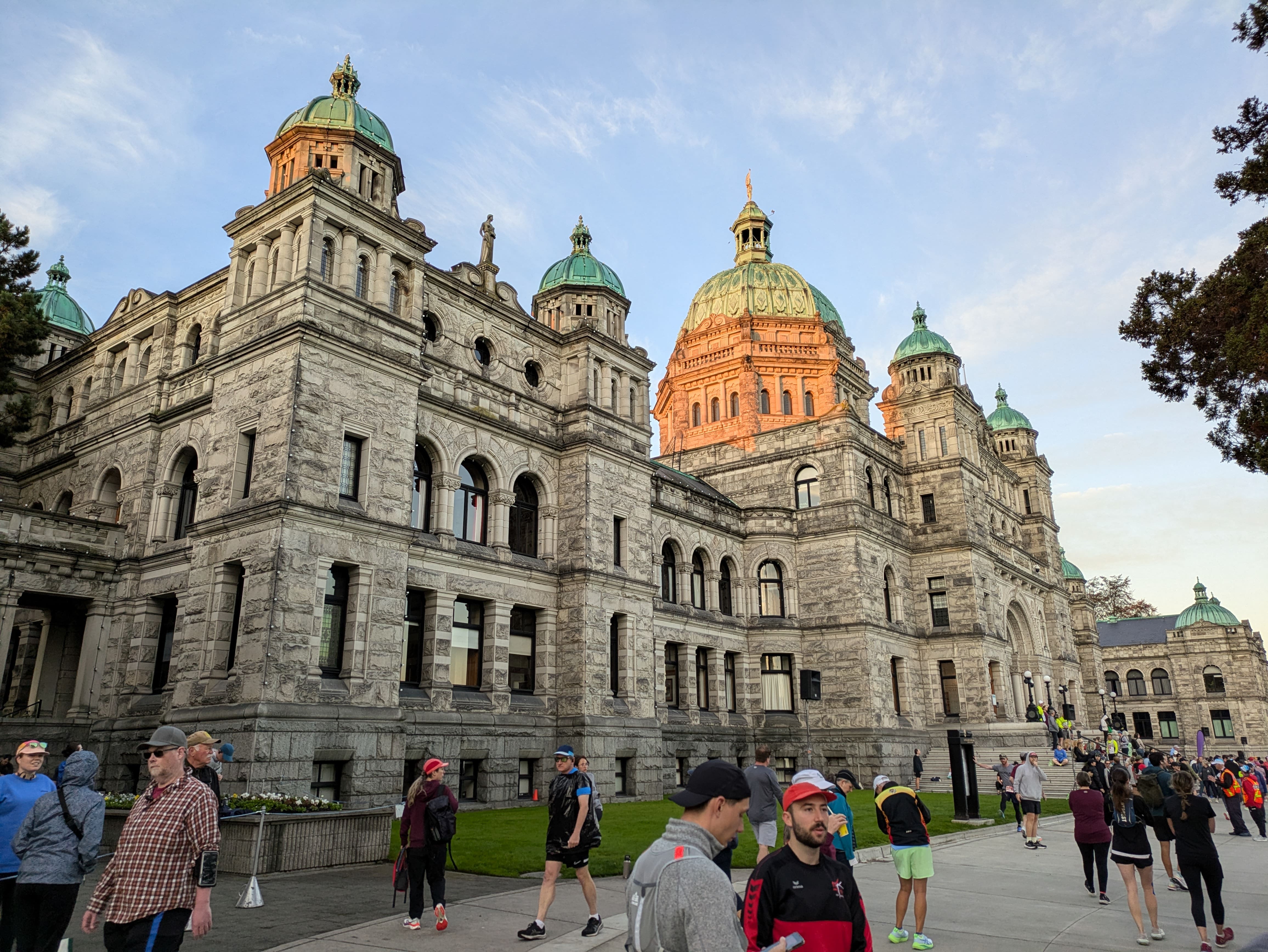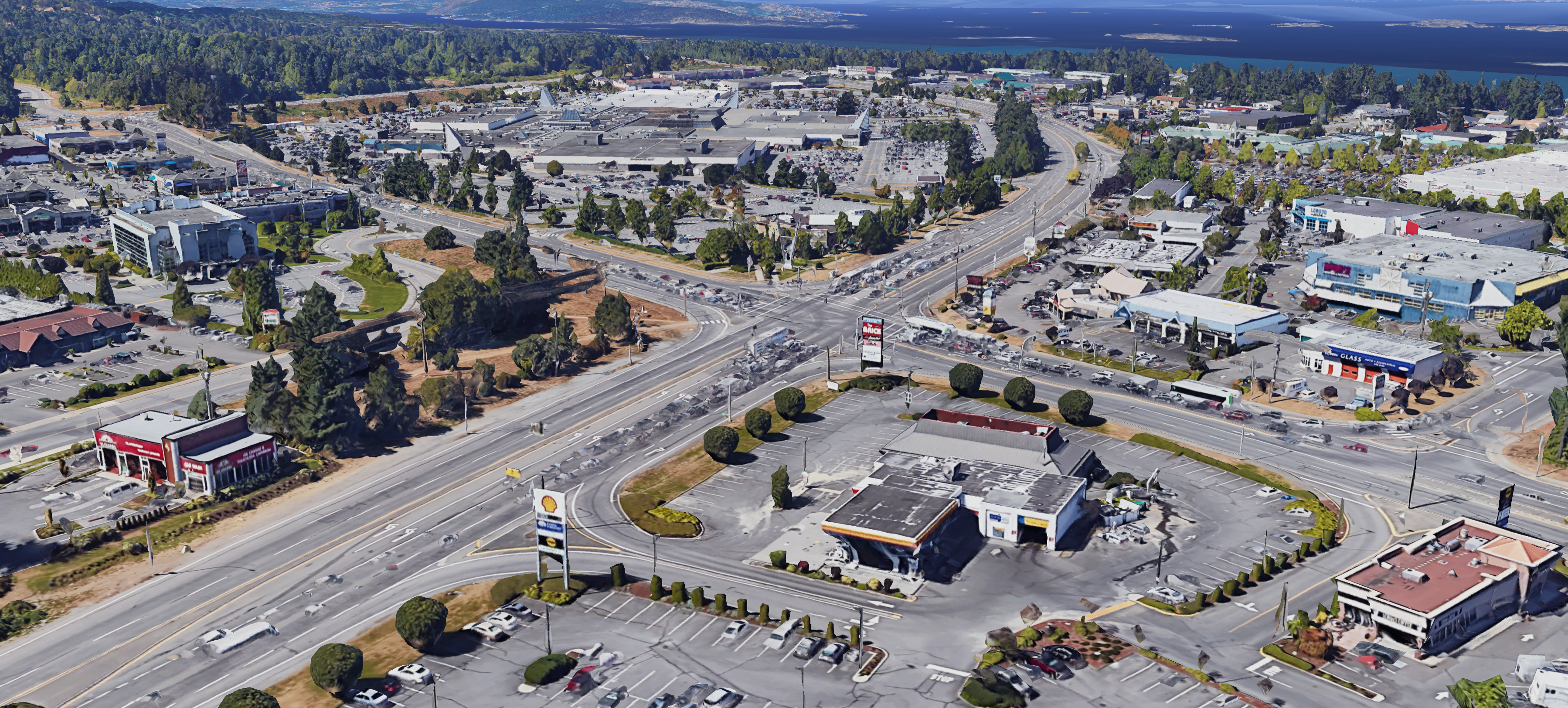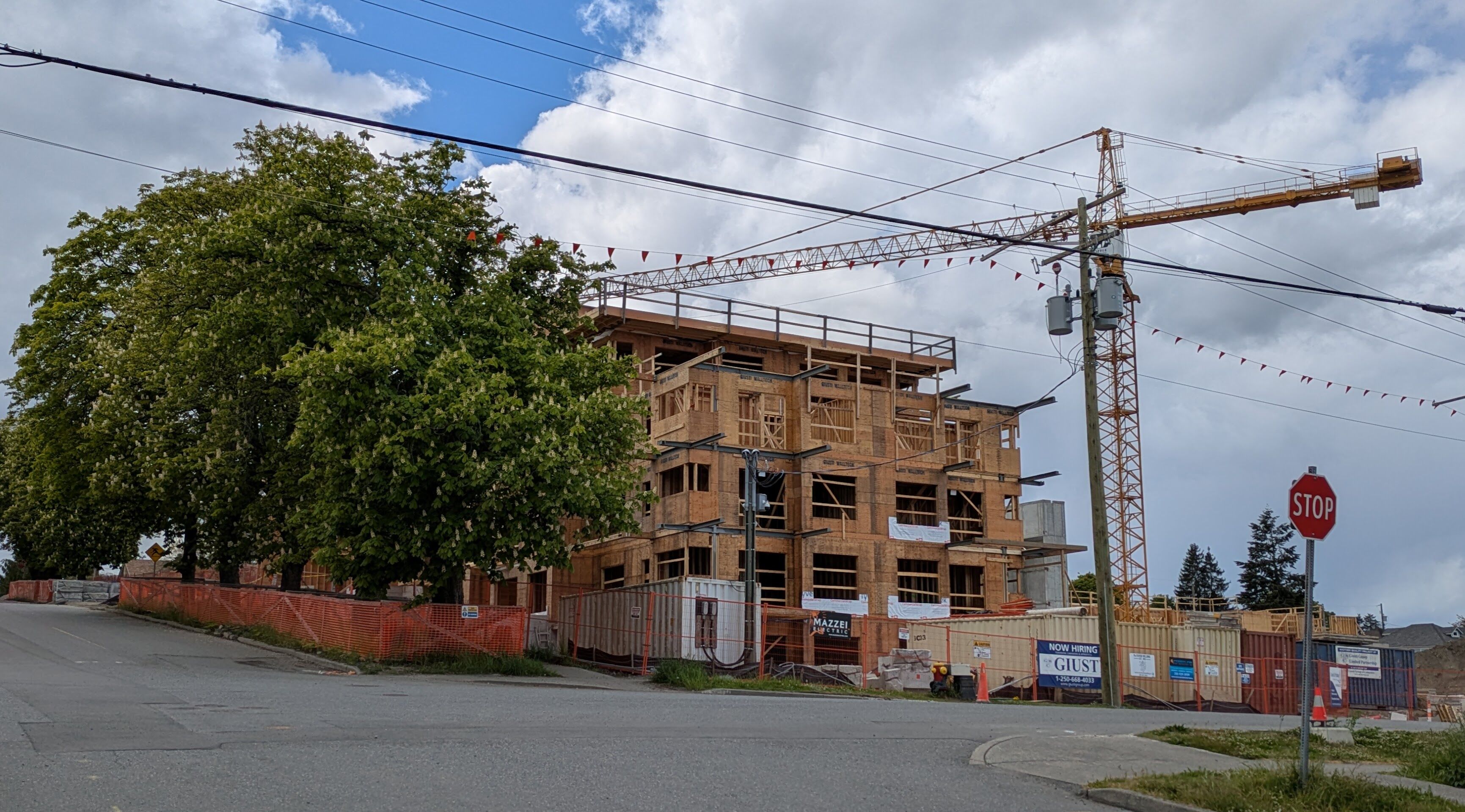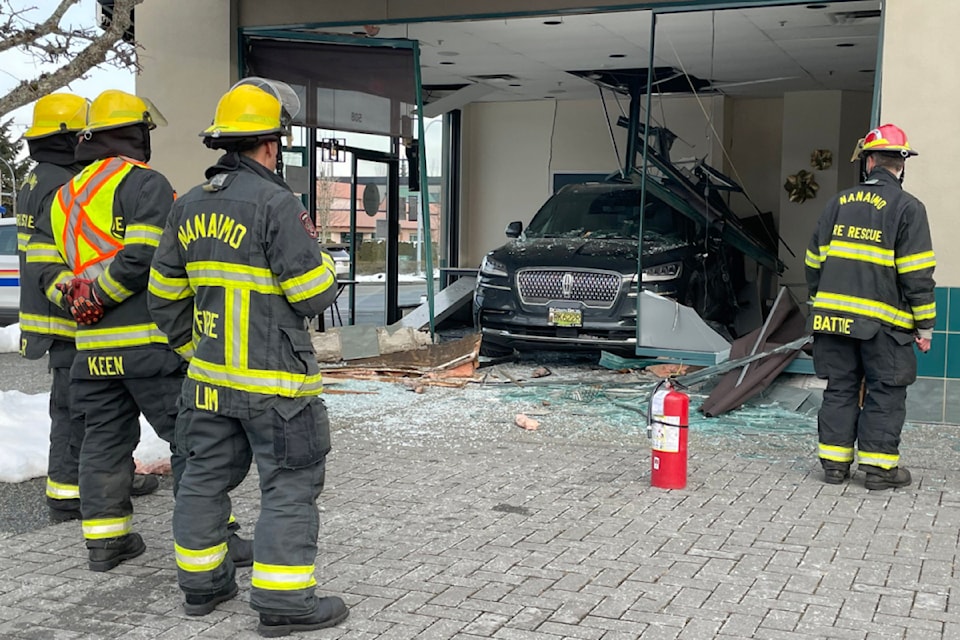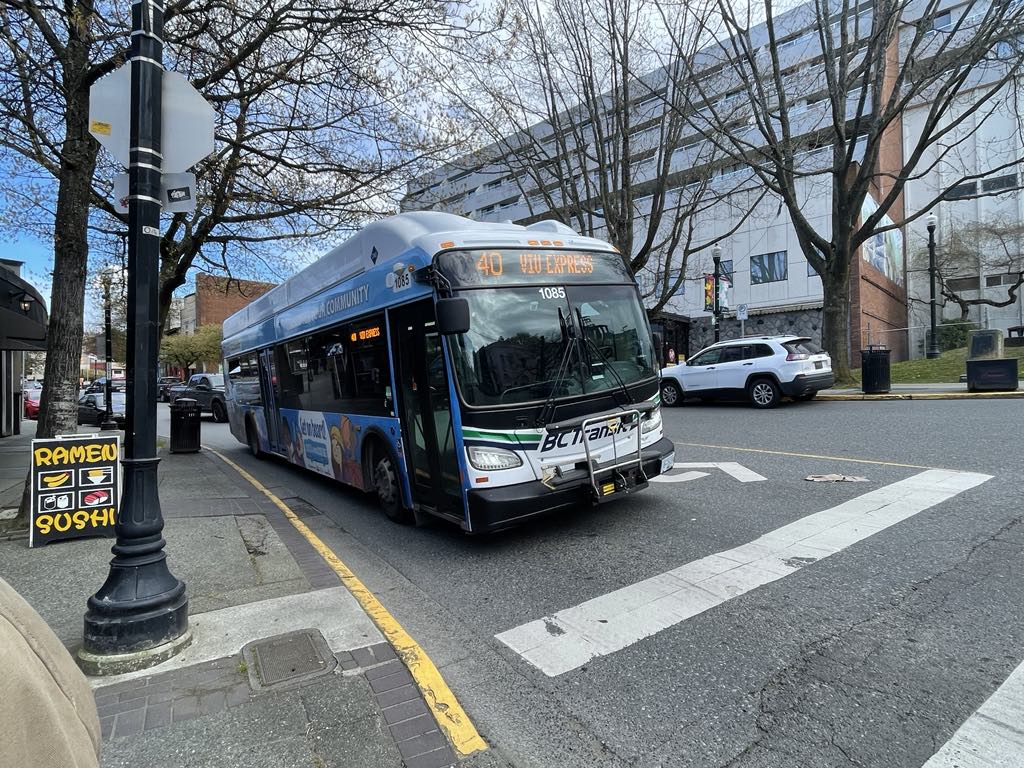As of May 11th, four Nanaimo residents have died after being hit by a vehicle. After a 90 year-old woman was struck and killed in the Walmart parking lot, CBC reached out to Strong Towns Nanaimo for comment. This article follows up on our radio and television interviews on Nanaimo’s pedestrian safety. Size, speed, and roadway design all impact the safety of our streets.
Strong Towns Nanaimo tries to maintain a generally positive and jovial tone, but pedestrian death is not a jovial subject. Nanaimo residents don’t deserve to die on their way to the store. We reject the word “accidents.” Thanks to our built environment, pedestrian deaths are an eventuality.
We Know (Statistically) How Many People Will Die Each Year
In 2022, there were 27 fatal victims on Vancouver Island1. A “fatal victim” is someone who has died within 30 days of a crash involving at least a single motor vehicle. The five-year rolling average number of fatal victims in Vancouver Island is 39 people. As of writing, four people have already lost their lives due to conflicts with vehicles this year in Nanaimo alone. It’s only May.
- April 2nd, 2024: Pedestrian dies after being struck by a pickup truck by the hospital
- March 21st, 2024: 80 year-old woman dies after being struck by a pickup truck
- Feb 27th, 2024: Nanaimo pedestrian struck with life-threatening injuries on Nicol
- Feb 25th, 2024: 90yo Nanaimo woman dead after hit and run on Cedar Road
Unfortunately, there are more examples from across the island. On February 12th, a Qualicum Beach senior was struck and killed by a pickup truck. On February 21st, a Port Alberni teen was involved in a hit-and-run.
 Table Of Fatal Victims In British Columbia (ICBC)
Table Of Fatal Victims In British Columbia (ICBC)
In most cases in Nanaimo, the fatal victims were struck by pickup trucks. We’ve written at-length about pickup truck safety in the past, but it’s important to reiterate just how much danger larger vehicles pose to those outside of a vehicle.
“For every 1000 pounds a car weighs over a Toyota Corolla, the chance of killing another person increases by 46%.” Pounds That Kill (Anderson and Auffhammer, 2011)
The average weight of a Ford F150, the most popular vehicle in Canada by sales for the last few years2, is around 5000 pounds (note: most pickup trucks on the market in 2024 actually weigh more on average than a standard Ford F150). The average weight of a Toyota Corolla is around 2500 pounds. As of 2022, 23% of new vehicles on the market were classified as pickup trucks3 and the evidence is very clear: these types of vehicles - which are only getting larger and more popular - are statistically more likely to kill anyone who’s unfortunate enough to be hit by them. What’s more distressing is that modern pickup trucks, like the Ford F250, have view distances of about 28 feet–this means that someone sitting in the driver’s seat can’t see anything on the ground unless it’s at least 28 feet ahead of them. For context, the view distance of a Ford Fiesta is roughly 13 feet.
 View Distance Of A Typical Ford F250 Super Duty, A Totally Normal Vehicle That Anyone Can Buy (Myles Russell)
View Distance Of A Typical Ford F250 Super Duty, A Totally Normal Vehicle That Anyone Can Buy (Myles Russell)
This means that drivers of modern pickup trucks both have both worse visibility and a higher likelihood to kill anyone they collide with. This is a recipe for disaster. While our numbers are pegged to pickup trucks, the fact of the matter is that heavier SUVs are just as much to blame as large trucks.
Speed At The Expense Of Everybody Else
An entry-level physics class will tell you that force is just mass multiplied by acceleration. We just spoke about mass, so let’s talk about speed. The Federal, Provincial, and municipal governments all agree that speed is one of the primary factors in determining fatality rates. The Canadian Association of Road Safety Professionals (CARSP) noted the following4:
- 30 km/h → 90% survival rate. This is the speed limit around playgrounds & schools
- 40 km/h → 60% survival rate
- 50 km/h → 20% survival rate. This is the speed limit throughout most of Nanaimo
- 60 km/h → 0% survival rate
These numbers match those provided by the City of Nanaimo’s Traffic Calming document online too5. ICBC corroborates these numbers in their documents as well6. If someone is struck by a vehicle going 60 km/h, they will end up in the morgue, not the hospital.
One of the most influential tools cities have to limit road speeds is the width of roadways. Countless studies have concluded that driver speed goes up as road width increases7. This isn’t the driver’s fault, but it makes sense: drivers will accelerate to speeds that feel comfortable, regardless of the number on the speed limit sign. Think about the highway coming into town from South Nanaimo. Before it turns into Nicol the speed limit turns to 50. People generally drive down this road at 70 or higher.
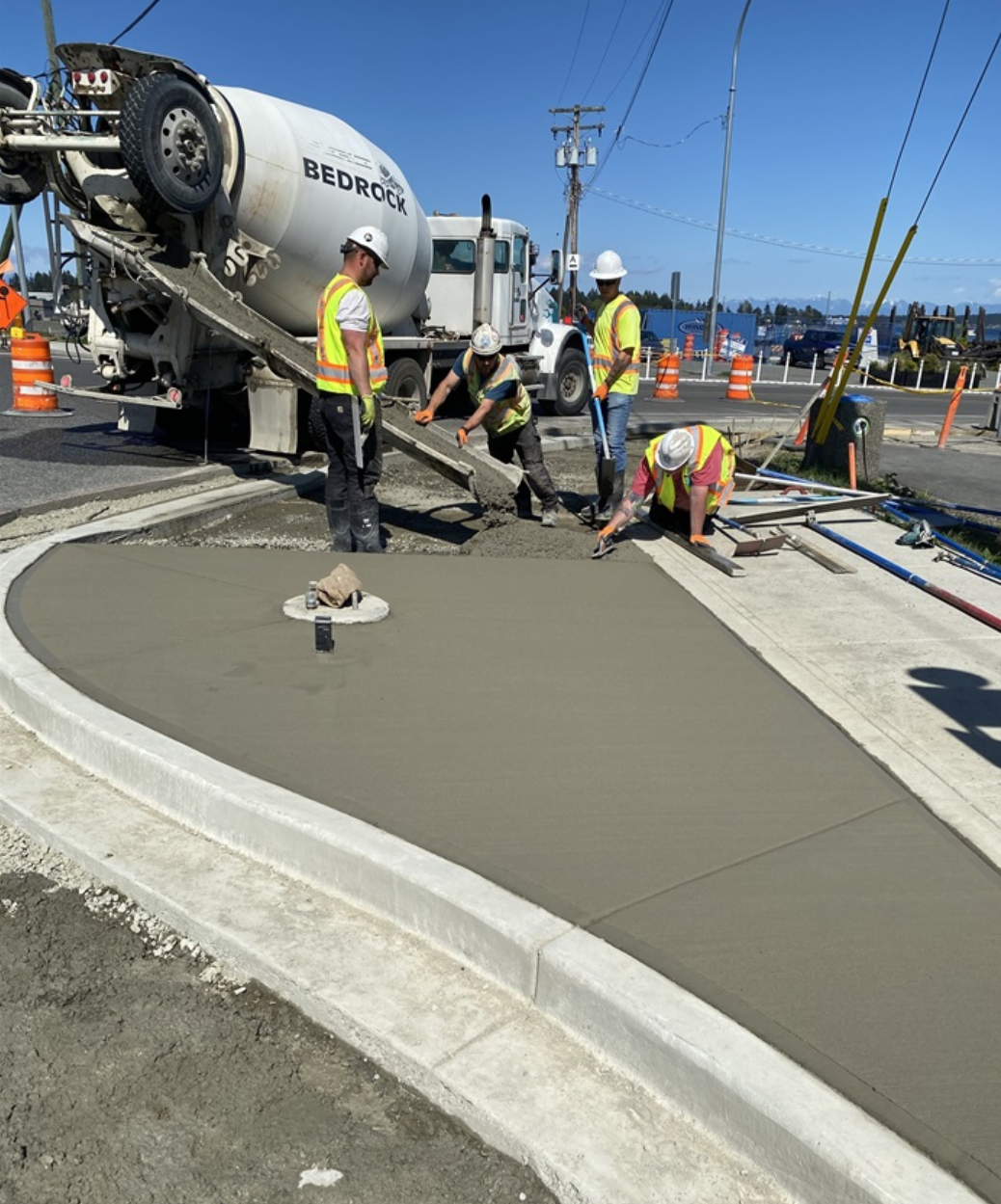 Workers Implementing Traffic Calming Measures Along Front Street (City of Nanaimo)
Workers Implementing Traffic Calming Measures Along Front Street (City of Nanaimo)
To Nanaimo’s credit, the City has been working on remediating our roadways. The Metral Drive Complete Streets project partially narrowed driving lanes while also adding raised bike lanes, improved sidewalks, street trees, and more. One objective they held for the project was to reduce roadway speeds8 which, in turn, would lead to fewer fatalities along the corridor. We have also written about the benefits of narrower roads, so we won’t beat a dead horse.
This project was a net-win for anyone living in the area, especially those with children. So many children now bike to the local school that their bike racks are completely overrun9. Children are excellent “indicator species” for safe infrastructure - when children in the area feel safe enough to commute to school on their own, it’s a clear indication that a roadway has reached a healthy level of safety for those outside of vehicles. What’s more, this clearly shows that the original design of Metral Drive was not comfortable for anyone but those driving.
How The City Of Nanaimo Can Save Lives
If you’re a city council member, city staffer, or Mayor Krog’s bestie, what can you do to save lives? City officials are unlikely to have much luck influencing the types of vehicles residents purchase. What they can do is build safe streets that increase the safety and comfort for those outside of a vehicle.
Wakesiah Ave is a street that hosts a high school, a university, transit lines, and two incredible parks. The entire length of the corridor is frequented by one demographic in particular: students. Despite relying on this corridor to get to-and-from school, students are unlikely to email their municipal representatives. In 2023, a Complete Streets Wakesiah project was postponed (plans can be found on the City’s website). Mayor Leonard Krog said that he couldn’t recall any correspondence from citizens asking for Wakesiah upgrades10. Children cannot conceptualize the minutiae of road safety and active transportation and therefore cannot appear as a delegation to Council, write to the City, or complain in any meaningful way. Adding raised cycle lanes, street trees, bus shelters, and wider sidewalks along Wakesiah would profoundly impact the safety of all who commute along the corridor.
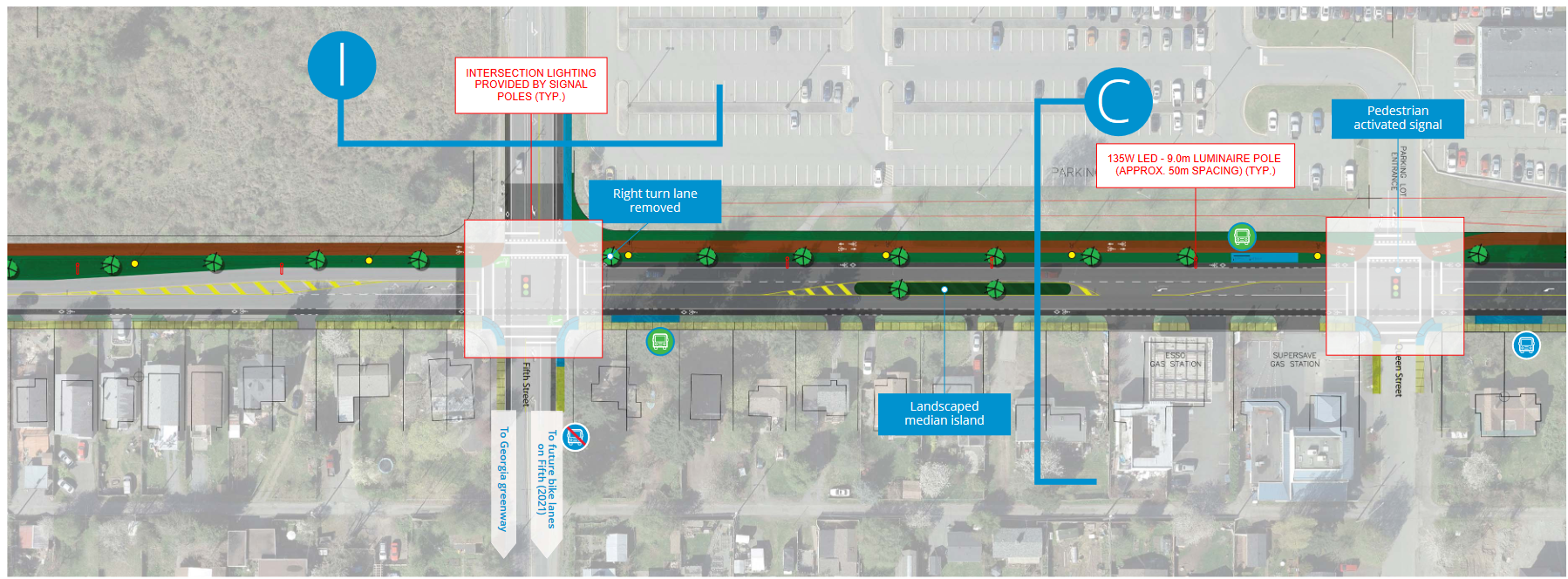 Above-Ground View Of Proposed Roadway Changes Along Wakesiah (City of Nanaimo)
Above-Ground View Of Proposed Roadway Changes Along Wakesiah (City of Nanaimo)
Narrowing lanes saves lives. Building protected cycling infrastructure saves lives. Separating vehicles from those walking, cycling, or taking transit saves lives. Infrastructure is foundational in the conversation on road safety, and we as a city must collectively demand better. Build it better, Nanaimo.
-
https://public.tableau.com/app/profile/icbc/viz/QuickStatistics-Fatalcrashesandvictims/FatalVictims ↩
-
https://www.guideautoweb.com/en/galleries/73299/top-10-best-selling-vehicles-in-canada-in-2023/?im=10 ↩
-
https://www150.statcan.gc.ca/t1/tbl1/en/tv.action?pid=2010000201 ↩
-
https://carsp.ca/en/news-and-resources/road-safety-information/safe-speeds/ ↩
-
https://www.nanaimo.ca/transportation-mobility/traffic-calming ↩
-
https://www.icbc.com/road-safety/crashes-happen/speed/speed-infographic ↩
-
https://narrowlanes.americanhealth.jhu.edu/report/JHU-2023-Narrowing-Travel-Lanes-Report.pdf ↩
-
https://www.nanaimo.ca/your-government/projects/metral-drive-complete-street ↩
-
https://nanaimonewsnow.com/2024/02/26/grant-money-hoped-to-help-growing-bike-gangs-around-nanaimo-elementary-school/ ↩
-
https://www.nanaimobulletin.com/news/nanaimo-councillors-decide-not-to-add-wakesiah-avenue-upgrades-to-city-action-plan-1116558 ↩
